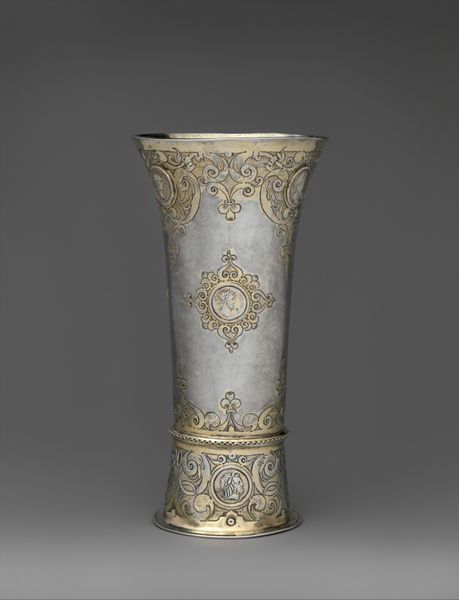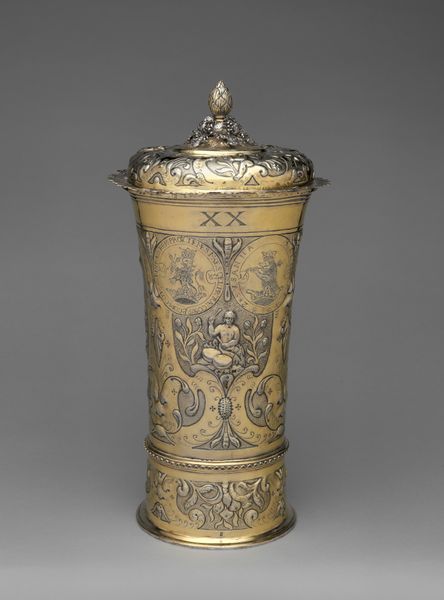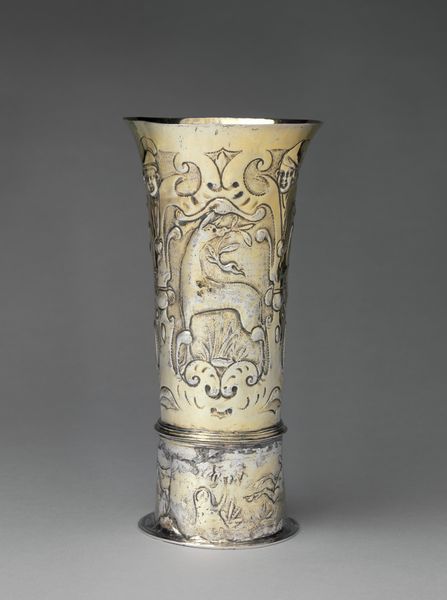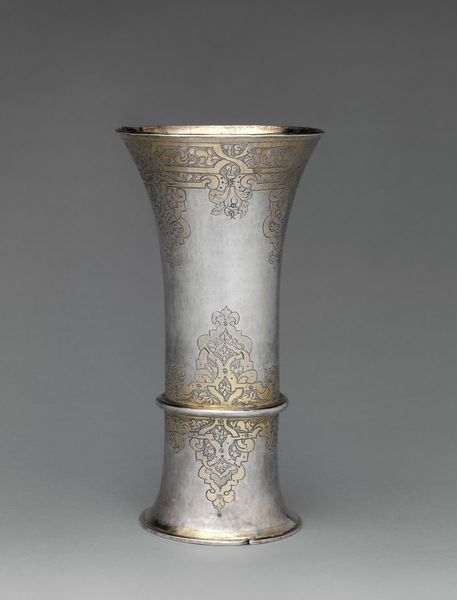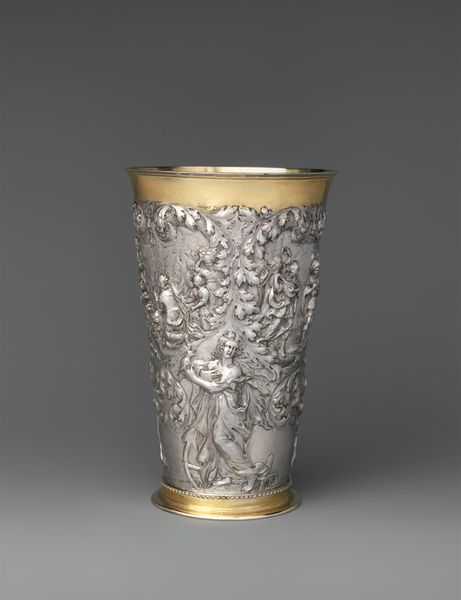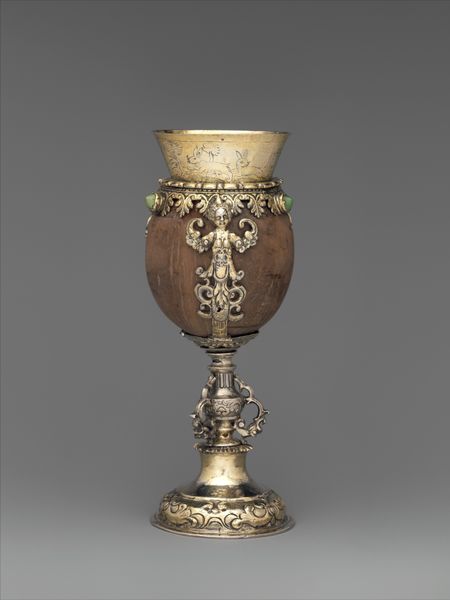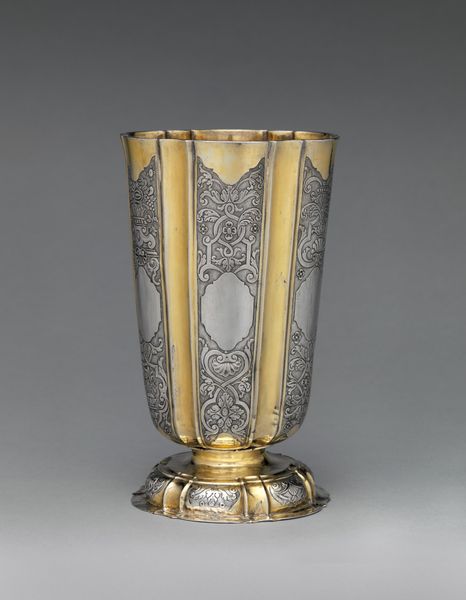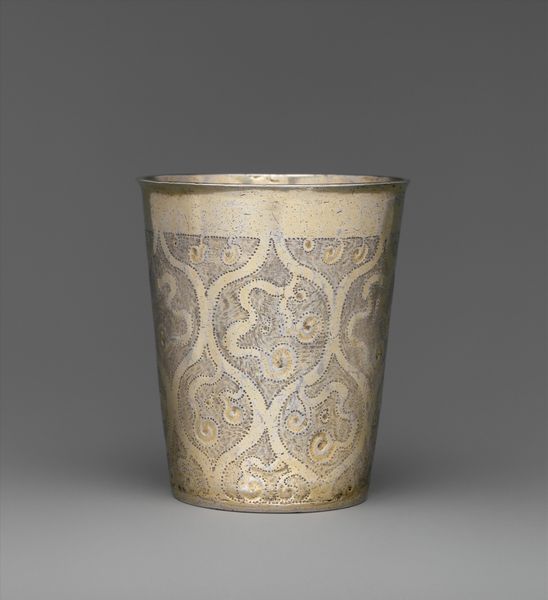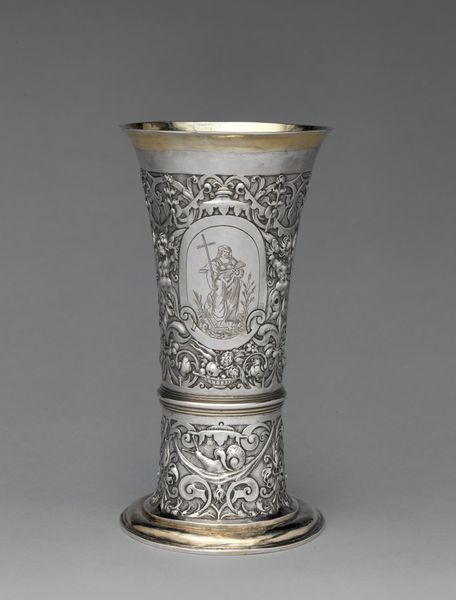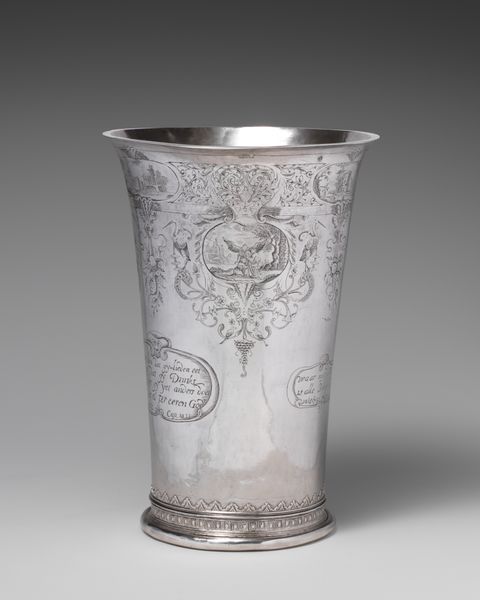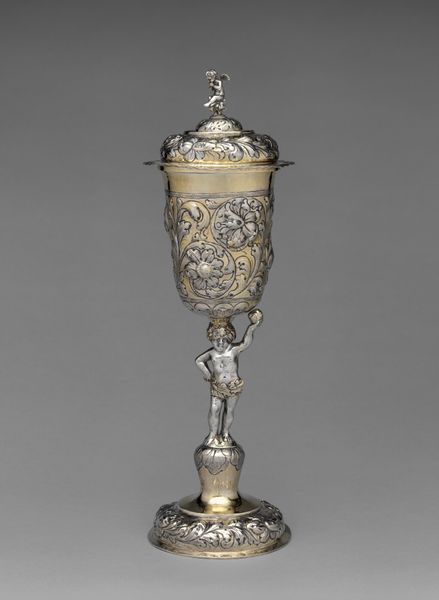
silver, metal, sculpture
#
silver
#
baroque
#
metal
#
sculpture
#
decorative-art
Dimensions: Overall: 5 15/16 x 2 13/16 in. (15.1 x 7.1 cm)
Copyright: Public Domain
Curator: Georgius Gebell II, a name to remember. And this “Footed Beaker” created sometime between 1630 and 1665, showcases a beautiful display of baroque silver work. Editor: It's surprisingly delicate for metal. The overall shape is so clean, almost cylindrical. The gold trim on top and bottom—does it offset the coolness of the silver or enhance it? Curator: I believe it enhances it! Silver during this period wasn't merely decorative; it signified wealth, status, power—particularly during a period marked by mercantilism and global trade. The elites consumed luxury to communicate prestige. Editor: But look closer! The flowers, too, they aren't just ornamentation. Those engravings are symbolic, aren't they? Can we trace the roots to specific aristocratic or regional customs? Curator: Absolutely. Floral motifs during that era spoke to various aristocratic sentiments—loyalty, prosperity, perhaps even coded political affiliations. Analyzing heraldic traditions alongside Gebell’s patronage will reveal more. Editor: And I am curious about the surface of the metal; that intricate beaded texture adds dimension. It’s quite seductive! Do you think that impacts the user’s experience? Curator: Oh undoubtedly. Holding such a vessel wouldn’t just be about hydration. It transforms even the mundane task of drinking into a moment interwoven with luxury, beauty, a gentle nod to larger social power. Editor: It makes me rethink what "functional" art can be. So, more than a simple cup; this is practically a conversation starter. Curator: Exactly. Through the close observation of the art and material culture during Gebell’s era, we find narratives interwoven around power, commerce, and society. Editor: Seeing that interplay of elegance and ambition really reframes my appreciation. Thanks to the historical contexts, I’m drawn in to how deeply symbolic objects might be.
Comments
No comments
Be the first to comment and join the conversation on the ultimate creative platform.

